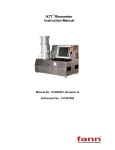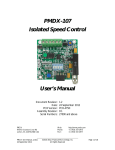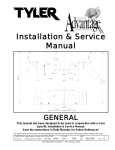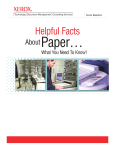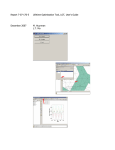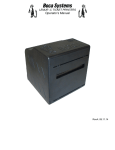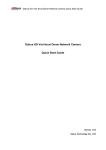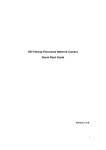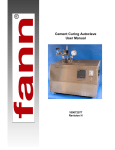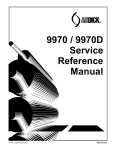Download EP Lubricity Tester
Transcript
Model 212 EP/Lubricity Tester User Manual Part No. 206905 Rev E Copyright 2009 Fann Instrument Company Houston, Texas, U.S.A. All rights reserved. No part of this work covered by the copyright hereon may be reproduced or copied in any form or by any means -- graphic, electronic or mechanical without first receiving the written permission of Fann Instrument Company, Houston, Texas, U.S.A. Printed in U.S.A. NOTE: Fann reserves the right to make improvements in design, construction and appearance of our products without prior notice. ® FANN is a registered trademark of Fann Instrument Company. Fann Instrument Company P.O. Box 4350 Houston, Texas, U.S.A. 77210 Telephone: 281-871-4482 Toll Free: 800-347-0450 Fax: 281-871-4358 ii Contact FANN Phone TELEPHONE: 281-8714482 TOLL FREE: 800-347-0450 FAX: 281-871-4358 Mail Fann Instrument Company P.O. Box 4350 Houston, Texas, 77210 USA Location Fann Instrument Company 15112 Morales Rd Gate 7 Houston, Texas 77032, USA Online www.fann.com [email protected] iii Document Conventions The following icons are used in this manual to distinguish elements of text. Contains additional information for the reader that is not safety related. Describes a situation or practice that if ignored, will result in equipment damage or loss of data. Describes an unsafe condition or practice that, if not corrected, will result in personal injury, possibly death. iv TABLE OF CONTENTS SECTION PAGE 1 Introduction to the Model 212 EP/Lubricity Tester 1 2 Safety 3 2.1 3 Machine Hazard 3 Features and Specifications 5 3.1 Mechanical 5 3.2 Electrical 5 4 Installation 7 5 Operation 8 5.1 Calibration 8 5.2 Lubricity Test 9 5.3 Extreme Pressure (EP) Test 6 13 Analyzing Results 18 6.1 Sample Lubricity Calculations 18 6.2 EP Calculations and Measurements 18 Troubleshooting and Maintenance 21 7 7.1 Cleanup 21 7.2 Belt Adjustment 21 7.3 Lubrication 21 7.4 Bearing and Seal Replacement 21 7.5 Torque Shaft and Cam Bushing Removal and Replacement 22 v 7.6 Calibration Check and Electrical Adjustment 23 7.7 Electrical Maintenance and Diagnosis 30 8 Accessories 32 9 Parts List 34 10 Warranty and Returns 37 vi 1 Introduction to the Model 212 EP/Lubricity Tester Frictional resistance to rotation of the drill string is called torque, and frictional resistance to hoisting and lowering the drill string is called drag. Many different materials have been used as drilling fluid additives to improve lubricity, thereby reducing friction. The lubricity, or drill string to bore hole wall drag, of drilling fluid is a property of special importance in drilling directional wells. An increase in friction between drill string and borehole is expected when drilling a hole off-vertical. Most of the wells drilled from fixed platforms offshore are completed in deviated holes. Desirable characteristics of a lubricant for this purpose, aside from the obvious requirement of performing well as a lubricant, are that it is non-toxic and biodegradable, and does not form an oily slick on water. Since evaluation of the various lubricating materials in the various types and quality of drilling fluid cannot realistically be done on the drilling rig, a functional (drilling fluid lubricity) test was designed to simulate the torque and drag produced by a given drilling fluid downhole. The tester models or approximates the speed of rotation of the drill pipe and the pressure with which the pipe bears against the wall of the hole where the friction is generated. Extreme pressure lubricants have been developed to increase the life of bit-bearings. Extreme pressure lubrication deals with metal surfaces in rubbing contact with each other at very high pressures (30,000 to 100,000 psi (206,820 to 689,400 kPa)). Lubrication for the metal surfaces is provided by a pressure resistant film that is produced as a result of the chemical reaction initiated by a high temperature generated from friction at the area of contact. The combination EP (Extreme Pressure) and Lubricity Tester is a high-quality instrument designed to measure the lubricating quality of drilling fluids, provide data to evaluate the type and quantity of lubricating additives that may be required, and predict wear rates of mechanical parts in known fluid systems. The EP tests (Fig. 1) are performed by applying a measured torque with a torque arm to a torque-sensitive, rotating bearing cup. This provides a means of testing lubrication under extreme pressure conditions and produces an indication of the film strength of the fluid being tested. The problem of reduction of friction between the drill string and the borehole requires a different simulation. The more common lubricity test (Fig. 1) measures fluid resistance (lubricating character) between two hardened steel moving surfaces at 100 pounds force (which translates into a 5,000 to 10,000 psi (34,470 to 68,940 kPa) pressure on the intermediate fluid film). During the lubricity test, a steel block is pressed against a rotating steel ring. Load in inch-pounds (in-lb) is read directly from the dial on the torque arm. Measure of friction is a requirement for the determination of the film strength of a lubricant, for bit bearing wear, as is obtained in EP test and for the determination of torque or drag of the drill pipe as determined in the lubricity test. Friction is measured as the coefficient of friction (µ). The coefficient of friction (µ) between two solids is defined as F/W, where F denotes the frictional force and W is the load or force perpendicular to the surfaces. Thus, the coefficient of friction is independent of the apparent area of contact as long as this area is not so small as to break through the film; that is, with the same load W, the force to overcome friction will be the same for a small area as for a larger area. Applied to the Lubricity Tester, the load is the force with which the test block is pressed 1 against the test ring through the torque arm. The force F required to slide the block and ring surfaces across each other at a given rate is measured by the power required to turn the test ring at a prescribed number of revolutions per minute. The coefficient of friction, µ = F/W. Refer to Figure 1. Figure 1 - Comparison of EP and Lubricity Test 2 2 Safety 2.1 Machine Hazard 2.1.1 Electrical This instrument is powered by 115 VAC power. The motor is 90 VDC. The control panel enclosure contains electronic control components. Only a qualified electrician or Fann service representative should try to perform maintenance on these components. Make sure the machine is unplugged when cleaning or moving it. Be sure it is unplugged when wiping the bench around or under it. Do not allow the panel containing the meter to get wet. If test fluid or water is spilled on it, wipe clean with a damp cloth. Excessive water could cause damage to the electrical components on the under side of the panel and could also be an electrical shock hazard. 2.1.2 Temperature The test blocks become hot due to the friction generated by the tests. Use caution immediately after stopping a test as these parts may get hot enough to cause burns. 2.1.3 Mechanical This machine is driven by a motor connected by a V belt drive to the main shaft assembly. A belt guard offers protection from the V-belt itself. The output shaft can still be a hazard, so precaution should be exercised to keep hands, clothes, and other objects clear of all rotating parts. Do not put hands or fingers in or near the sample cup, test block or test ring while the machine is running. 2.1.4 Safety Precautions during Calibration Calibration procedures are described in Section 7. These procedures will determine if it is necessary to partially disassemble the machine for a complete calibration. PROCEDURES OF SECTION 7 INVOLVE OPERATING THE MACHINE WITH THE BELT GUARD AND CONTROL PANEL REMOVED. THIS EXPOSES UNPROTECTED, HIGH VOLTAGE TERMINALS. TOUCHING OR ALLOWING THESE TERMINALS TO TOUCH THE MACHINE OR WORK SURFACE CAN CAUSE DAMAGE AND INJURY. ALSO, THE PRONY BRAKE IS A DYNAMIC BRAKING TOOL WHICH IF NOT HANDLED CAREFULLY CAN GRAB ONTO SHAFT AND SWING UPWARDS TOWARDS OPERATOR WHILE DROPPING A 1000 GRAM WEIGHT. 3 This procedure should be carefully studied and a "DRY RUN" made with the machine unplugged to become familiar with where moving parts will be, where exposed electrical connections are, and where the adjustment potentiometer are located so that neither the technician nor the machine is injured by these potential hazards. Make sure to unplug the machine before re-assembly. 4 3 Features and Specifications 3.1 Mechanical Motor and Belt Drive The motor runs at 90 VDC maximum. Its speed is directly variable by voltage with a maximum of 1800 RPM. The speed is reduced at the V-belt sheaves by a factor of 1:1.6. Lubricity Test Blocks and Rings The lubricity test blocks and rings are hardened steel components between which the fluid lubricity is tested. These components must be matched and calibrated together before performing a test. The ring will wear a uniform wear pattern in the block during calibration. There are different types of test blocks and rings for EP tests and for lubricity tests. The rectangular blocks are used for EP tests. The blocks used for lubricity tests have a rounded inset surface. See Figures 1, 4, and 5. Prony Brake The prony brake, shown in Figure 9, is a device for checking torque and horsepower from a motor. A torque wrench serves as the torque arm and provides a means for measuring torque values. The torque wrench is held in place by the retainer arm. 3.2 Electrical Analog Meter The analog meter displays RPM or torque as selected by the toggle switch. This meter is a specialized unit for the Model 212 EP/Lubricity Tester and must be serviced by Fann Instrument Company. Magnetic Speed Pickup Sensor. This meter reads the RPM of the test ring by magnetic change on the main shaft sends a micro amp signal to the calibrated analog meter for accurate measurements. Motor Control Board The motor control board, shown in Figure 7, converts AC power to DC for the motor. There are adjustments to the board that are outlined in the maintenance section Preparation for Speed and Torque Calibration. 5 Figure 2 – Functional Diagram EP/Lubricity Tester 6 4 Installation The Model 212 EP/Lubricity Tester is easily mounted on a laboratory countertop. A 115 VAC power source is the sole service required for this unit. The Model 212 requires 5 A current at 115 VAC. A separately available 230 VAC step down transformer is needed to reduce the power from 230 to 115 VAC. See Section 8 for the part number. 7 5 Operation 5.1 Calibration 5.1.1 Block and Ring Pair Calibration Verify the alignment of the eccentric bushing up or down and in or out, with ring-block submerged in water so that wear pattern being generated is in the center of the shiny portion of the block. Operate pair in distilled water for at least 15 minutes before taking any data at standard conditions (60 rpm and 150 in.-lbs. (16.95 n·m)). This must be done as a new pattern will develop over the old one when a pair is moved to another tester, as no two machines will have exactly the same geometry. If adjustments are required, refer to Section 5. After using pairs for testing slurries, periodically return to water to be certain of trend of pair, or to be confident that a migration of 3-4 units has not occurred. Life of a pair is determined by wear depth. Measure the OD of ring when new and note that when 0.025 in. (.635 mm) has been worn from case hardened surface (0.050 on the OD), then the ring is devoid of consistent case hardening and will not produce reasonable readings. Block life should never extend beyond a 0.1 inch (2.54 mm) wear depth. As the pair ages, new calibration data can be inserted on this sheet at any time to ensure user confidence in the data produced by the pair. Correction Factor (CF) = Lubricity Coefficient = 34 (AV. READING) Meter Reading X (CF) 100 CALIBRATION CHECK RUN 1 TIME READING RUN 2 TEMP.°F/°C TIME STARTING 30 MIN. 40 MIN. 50 MIN. 60 MIN. 70 MIN. AVERAGE READING: Figure 3 - LUBRICITY RING BLOCK PAIRS 8 READING TEMP.°F/°C 5.2 Lubricity Test 5.2.1 Block and Ring Standardizing Test The coefficient of friction value for water would be 34 at 60 RPM and 150 in-lb (16.95 N·m) torque, if all ring-block metallurgical structures were the same. However, since they are not, a correction factor of 34 divided by the water reading is used. A convenient form for this purpose is shown in Fig. 3. 5.2.1.1 Clean test ring and test block with a cleaner such as Ajax® or Comet® with chlorinal, and rinse thoroughly with water. Before starting the test, all parts of machine in sample area must be clean. This includes the stainless steel cup exposed portion of bushing, cup retainer nut, block holder, and lower part of shaft CONTAMINATION CAN CAUSE INCORRECT TEST RESULTS. AVOID TOUCHING THE OUTSIDE OF TEST RING. 5.2.1.2 Place lubricity test ring on main shaft and, using wrench, secure with test ring retainer nut. Engage shaft lock plunger in hole in shaft to prevent shaft rotation while retainer nut is tightened. Make sure the ring seats squarely on the taper of the shaft. 5.2.1.3 Place lubricity test block in block holder with indentation towards main shaft away from torque shaft (Refer to Fig. 2). 5.2.1.4 With meter switch in RPM position, turn power switch to "ON". Let machine run approximately 15 minutes. 5.2.1.5 Rotate speed control knob counterclockwise until the Torque/RPM meter registers 60 RPM. 5.2.1.6 Turn meter switch to TORQUE. Turn torque/zero adjustment knob until torque registers zero. Turn off machine. 5.2.1.7 Fill stainless steel sample cup with distilled water. Place on lowered cup stand. Raise cup stand until ring is submerged. Secure with thumb screw. 5.2.1.8 Release the torque adjust handle, turning it counterclockwise, as far as is necessary, then position torque wrench handle so that it fits inside concave portion of torque arm clamp. 5.2.1.9 Start machine and let it run approximately 5 minutes, then recheck RPM and torque, as in steps 5 and 6. 5.2.1.10 With meter switch in TORQUE position, rotate torque adjust handle clockwise to apply 150 in-lb (16.95 N·m) of torque. Let machine run 4 to 5 minutes. 9 5.2.1.11 A ring-block pair calibration sheet (Fig. 3) with water readings is supplied with each new machine. Compare torque reading to this average value in the range of between 28 to 48 within ±3. If the ring-block surfaces are smooth and a record is available, proceed to C - "LUBRICITY MEASUREMENT OF TEST SAMPLE" and D - "SAMPLE LUBRICITY CALCULATIONS". Otherwise, the block and ring must be calibrated using procedure B - "STANDARDIZING BLOCK AND RING". A blank form, as illustrated in Fig. 3, should be used. 5.2.2 Standardizing Block and Ring If the coefficient of friction value for water is not in the proper range, is drifting excessively, or has scoured surfaces, the ring and block surfaces must be reconditioned or standardized. If a block is standardized, it will have a substantial portion (at least 1/3) of its curved surface worn to a shined condition with a minimum of groove lines through this polished area, as seen in Fig. 4, Ex. C. Also, a ring-block calibration data sheet should be filled out and maintained for the pair. When the ring and block are engaged in the following procedures, no new wear surfaces should appear and no unexpected results occur using the pair. 5.2.2.1 Check to ensure all surfaces are clean and that the wear surface is in the middle or just forward of the curvature on the block (Refer to Fig. 4 Ex. C). If an adjustment is required, follow the procedure given in Fig. 4. 5.2.2.2 Operate the machine at 100 to 200 RPM. If there is scouring, recondition the surfaces in water by applying fine valve grinding compound with finger to ring and applying 150 in-lb (16.95 N·m) of torque. Remove torque after 5 minutes to reapply grinding compound on ring. Then reapply constant 150 in-lb (16.95 N·m) of torque for 5 minutes. This procedure is repeated 3 to 4 times. 5.2.2.3 Use Ajax® or Comet® with chlorinal to remove grinding compound and grease, then rinse thoroughly. Mix 2 tablespoons of aluminum oxide powder into a cup of distilled water and submerge block and ring in this slurry. 5.2.2.4 Operate the instrument for 5 minutes at 700-1000 RPM, with 50 in-lb (5.65 N·m) torque between ring and block, then reduce the torque to 25 in-lb (2.83 N·m) for another 5 minutes. 5.2.2.5 Rotate torque adjust handle counterclockwise until torque handle can be released from torque arm clamp. Lower cup stand and discard fluid. Wipe fluid from sample cup, block, block holder, and ring. 5.2.2.6 Examine ring and block for shiny condition with a minimum of scars. If acceptable, retest block and ring standardization. Refer to "BLOCK AND RING STANDARDIZING TEST". 5.2.2.7 If an acceptable torque (28-48) steady (±3 units) reading is still not attained, check prony brake calibration of instrument. Refer to "PRONY BRAKE TORQUE CALIBRATION". 10 5.2.2.8 Precalculated ring block pairs are available as Part No. 206904 with the correction factor already determined. Use of the precalibrated block and ring eliminates the procedures described above in "BLOCK AND RING STANDARDIZING TEST" and "STANDARDIZING BLOCK AND RING" and allows check out of an instrument just as soon as the unit's eccentric bushing is adjusted to fit the blocks wear surface. If necessary, refer to Fig. 5 for adjustment procedure. 11 Figure 4 – Adjustment for Curvature of Lubricity Test Block 12 5.3 Extreme Pressure (EP) Test A test made with the EP/Lubricity Tester using the EP ring and block is a measure of the relative extreme pressure lubricating ability of a drilling fluid. 5.3.1 Block and Ring Alignment Test Before a test can be run accurately, the machine must be in proper adjustment, as indicated by the rectangular shape in Fig. 5, Ex. C. To test for proper adjustment (or to do a standard test) proceed through the following steps. If alignment is a problem, go to BLOCK ALIGNMENT. 5.3.1.1 Clean EP test ring (A5 ring Part No. 206902, with narrow raised surface) and EP test block (A6 block Part No. 206903, with 6 flat surfaces) with a cleaner such as Ajax® or Comet® with chlorinal and rinse thoroughly with water. Before starting test, all parts of the machine in the sample area must be clean. These include the stainless steel sample cup, exposed portion of bushing, test ring retainer nut, block holder, and lower part of shaft. 5.3.1.2 Install test ring squarely onto tapered portion of shaft. Then, using wrench, secure with test ring retainer nut. Engage shaft lock plunger in hole in shaft to prevent shaft rotation while retainer nut is tightened. (Refer to Fig. 1) Take care not to contaminate outside of test ring. Contamination by skin oil can cause inaccurate test results. 5.3.1.3 Place EP test block in block holder. 5.3.1.4 With meter switch in RPM position, turn power switch to "ON". Rotate speed control knob clockwise or counterclockwise until torque/RPM meter registers 1000± 100 RPM. 5.3.1.5 Turn meter switch to TORQUE. Rotate torque/zero adjustment knob clockwise or counterclockwise until torque registers zero. 5.3.1.6 Do not apply load yet. Operate machine at 1000± 50 RPM for approximately 3 minutes or until the torque zero reading stabilizes (ceases to drift appreciably). Reset torque knob to zero, if necessary. 5.3.1.7 Position torque arm so that it fits inside concave portion of torque arm clamp, making sure not to apply load yet. 5.3.1.8 Fill stainless steel sample cup with distilled water. Place on cup stand, and raise cup stand so that test ring, test block, and block holder are immersed in fluid. Tighten thumb screw. (Refer to Fig. 1) 5.3.1.9 Rotate torque adjust handle clockwise so that torque is increased at the rate of 5 in-lb (.565 N·m) per second until torque meter attains torque reading of 150 in-lb (16.95 N·m). Operate for 4 to 5 minutes or until a seizure occurs. If seizure occurs, remove load quickly. 5.3.1.10 Remove load by rotating torque adjust handle counterclockwise until torque is completely released from main shaft. When torque registers zero, turn power off. Lower cup stand. Turn torque arm clamp up and away. Swing torque arm back to allow removal of test block. Remove and clean test block. 13 5.3.1.11 Observe scar left on block by ring. Refer to Fig.5. Proper alignment of the test block in the holder will be indicated by the appearance of a rectangular scar on the test block (Fig. 5 Ex. C). An improper alignment will be indicated by the appearance of a triangular or trapezoidal shape, (Fig. 5, Ex. A & B). If alignment is proper, proceed to Section C. 5.3.2 Block Alignment If improperly aligned, block and block holder must be repositioned. 5.3.2.1 Check to be sure there is no play between the block holder and the shoulder at the bottom of the threads on the torque shaft bushing. Any looseness (up and down motion) must be corrected. Remove block holder, clean, and reinstall against the shoulder of bushing, onto keyed shaft, and tighten socket cap screw. Make sure o-ring, if used, is in place. 5.3.2.2 Depending on the shape of the triangle or trapezoid, adjust block holder either upward or downward. If trapezoid appears larger on top than on bottom (Fig. 5, Ex. A), holder must be adjusted downward. 5.3.2.3 Loosen bushing adjuster lock screw. Tighten torque arm adjusting nut until finger tight against shoulder at bottom of shaft. 5.3.2.4 Place 3/4" eccentric shaft wrench (A4) on threaded shaft flat and place 11/4" torque adjust wrench (A3) on torque bushing adjusting nut. Tighten nut pulling eccentric shaft downward in increments of .005 inch (.13 mm) to .010 inch (.25 mm)(1/12 to 1/6 turn) until a rectangular pattern is obtained. If the pattern changes as shown in Fig. 5, Ex. B, Refer to Step 5.3.2.7 below. DO NOT ALLOW ECCENTRIC BUSHING TO ROTATE AS THIS WILL DESTROY THE LUBRICITY ADJUSTMENTS 5.3.2.5 Tighten socket head screw. 5.3.2.6 Position block on block holder so that a new side will come in contact with the ring. (Eight tests can be run on one block.) Repeat the test outlined in Block and Ring Alignment Test to obtain a rectangular scar. If required, continue to repeat until a rectangular scar is obtained. 5.3.2.7 If the trapezoid appears smaller on top than on the bottom (Fig. 5, Ex. B), loosen bushing adjuster lock screw and loosen the adjusting nut one revolution (1/16 inch (1.5 mm)). 5.3.2.8 Tap end of shaft upwards about 1/16 inch (1.5 mm) or until nut is against shoulder. 5.3.2.9 Adjust block holder downward in increments of .005 inches (.13 mm) or .010 inches (.25 mm) as described in Block and Ring Alignment Test until a rectangular pattern is obtained. 14 Figure 5 – Adjustment to Correct Trapezoidal Pattern Problems of EP Test Block 15 5.3.3 EP Test Procedure on Sample The EP Test is used to determine the load or pressure the lubricant will hold without a complete breakdown of film strength. This is termed a PASS. Breakdown of lubrication film allows metal to metal contact, which causes galling and is termed a SEIZURE. A PASS may be identified in one of two different ways. One type of pass is a 5minute run at a constant load during which the torque meter reading remains essentially constant and the wear surface is small and polished. The other type is 5-minute run in which there is a moderate amount of torque meter deflection and the wear surface is moderate and either may be polished or dulled, depending on the abrasiveness of the sample. A SEIZURE is defined as tearing and galling (scarring) of the metal in contact between the test ring and test block surfaces, representing a complete breakdown of the lubricating ability possessed by the drilling fluid under test. A seizure is identified by a rapid, as opposed to slow, rise in torque reading. (A seizure also may appear as a sharp, substantial increase in torque which drops back to normal. This second type of seizure usually occurs at a relatively low torque reading or during tests of highly abrasive drilling fluids or drilling fluids with high solids content). A seizure is accompanied by an obvious change in the pitch (sound) of the machine, usually a sudden rasping sound or, in the case of the second type, an intermittent rasping sound. After a seizure, the wear surface on the test block will be very large and will appear very rough and scarred. The surface of the test ring also will be rough and scarred. 5.3.3.1 Install new test ring squarely onto tapered portion of shaft. Then, using wrench A2, secure with test ring retainer nut. Engage shaft lock plunger in hole in shaft to prevent shaft rotation while retainer nut is tightened. Take care not to contaminate outside of test ring. Contamination by skin oil can cause inaccurate test results. 5.3.3.2 Place EP test block in block holder, making sure a new side will contact ring. 5.3.3.3 With meter switch in RPM position, turn power switch to "ON". Rotate speed control knob clockwise or counterclockwise until torque/RPM meter registers 1000± 100 RPM. 5.3.3.4 Turn meter switch to TORQUE. Rotate torque/zero adjustment knob clockwise or counterclockwise until torque registers zero. 5.3.3.5 DO NOT apply load yet. Operate machine at 1000± 50 RPM for approximately 3 minutes or until the torque zero reading stabilizes (ceases to drift appreciably). Reset knob to zero, if necessary. Turn machine OFF. 5.3.3.6 Position torque arm so that it fits inside concave portion of torque arm clamp, making sure not to apply load yet. 5.3.3.7 Fill stainless steel sample cup with sample to be tested. Place on cup stand and raise cup stand so that test ring, test block, and block holder are immersed in fluid. Tighten thumb screw. Turn machine ON. 16 5.3.3.8 Rotate torque adjust handle clockwise so that torque is increased at the rate of 5 in-lb (.565 N·m) per second until an acceptable loading for the sample is reached, then operate for 4 to 5 minutes. If the maximum film strength is to be determined, continue the loading until a seizure is encountered. Note the maximum load (torque wrench reading). When seizure occurs, remove load quickly. 5.3.3.9 Repeat the test, using a new block surface and limiting the load to 50 in-lb (5.65 N·m) under where a seizure occurred and try for a Pass. 5.3.3.10 Repeat previous step if necessary to obtain a pass. 17 6 Analyzing Results 6.1 Sample Lubricity Calculations 6.1.1 Coefficient of Friction Torque Reading 100 Coefficient of friction = with the instrument set at 60 RPM and a pressure of 100 lbs. 150 in-lbs. (Torque wrench reading) = 100 lbs. That is: 1.5 inches (Torque shaft lever arm) 6.1.2 Correction Factor Correction Factor (F) = Meter Reading for Water (Standard) 34 Meter Reading obtained in water calibration = Meter Reading obtained (28 to 48) 6.1.3 Lubricity Coefficient Lubricity coefficient = 6.1.4 Meter Reading x Correction Factor 100 Percent Torque Reduction The percent torque reduction is based upon the torque reading of sample treated with a lubricant relative to the same sample untreated. A simple equation of this calculation may be written as follows: % Torque Reduction at a given load = 1 a. b. 6.2 BL x 100 AL BL = Torque reading of treated sample under a constant force. AL = Torque reading of untreated sample under same force. EP Calculations and Measurements 6.2.1 To measure scar width on the block, use a magnifier calibrated to read to 0.005 inch (0.13 mm). An appropriate magnified may be obtained from Fann Instrument Company, Part No. 206949. Before measuring, the test block should be wiped clean. The magnifier is placed at the center of the scar, parallel to the edges so that the average width of the scar can be obtained. The scar measurement is taken in hundredths of inches. Thus when a scar width of 0.095 inch, for example, is measured, it should be referred to and recorded as 9.5 hundredths of an inch. 18 6.2.2 To calculate the pressure on the block, compute the area of the scar, which is found by multiplying the width of the scar by its length. The length is a constant 0.125 inches (3.18 mm). Area = Width (W) X 0.125. The force acting on the scar area is found by dividing the torque meter reading at which a Pass was obtained by the lever arm, which is a constant of 1.5 inches. The pressure on the test block at the time the test was stopped is found by dividing this force by the scar area. This pressure is referred to as the film strength of the sample. An equation for the calculation is written as follows: Force T / 1.5 = Unit Area W x .01 x .125 T P = 533 W P = Where P = Film Strength, psi T = Torque meter reading, in-lb W = Scar width, hundredths of an inch W contains square inch units. The Nomograph shown in Fig. 6 may be used to derive the film strength without calculation. 6.2.3 Reporting Test Results 6.2.3.1 The lowest load (torque meter reading) in inch-pounds and the average torque in inch-pounds at which the seizure occurred are recorded. 6.2.3.2 Record the following at the conclusion of a Pass or if a 5-minute test does not produce a seizure: 6.2.3.2.1 Load (torque meter reading) in inch-pounds. 6.2.3.2.2 Scar width in hundredths of an inch. 6.2.3.2.3 Film strength in psi. 6.2.3.2.4 Average torque meter reading in inch-pounds. 19 Figure 6 – Nomograph for Extreme Pressure 20 7 Troubleshooting and Maintenance 7.1 Cleanup The area in contact with the sample must be thoroughly cleaned after completion of tests. This includes the lower end of main shaft, test ring, retainer nut, block holder, block, adjustable offset bushing threads, and adjusting nut. If the machine is to be stored for a long period, coat the above areas with oil to prevent rusting. Avoid fluid spillage on control panel, since this can seep around electrical components and cause electrical damage to the components. Disconnect the machine and remove panel, if required for cleaning. 7.2 Belt Adjustment After extensive use, check belt tension. Ensure sufficient tightness to that when the motor stalls, the belt does not slip. To adjust belt tension, use the following procedure: 7.3 7.2.1 Remove belt guard top half by removing 4 screws. 7.2.2 Loosen motor mount bolts and slide motor toward torque adjust handle, then retighten mounting bolts. Make sure motor remains square with frame thereby maintaining pulley alignment. 7.2.3 Replace belt guard. Tighten screws. Lubrication The roller bearing (lower bearing) of the main shaft is greased with high temperature grease such as Lubriplate #12601®, via the zerk fitting. This bearing should be greased each 6 months under normal use. Do not over grease. The top bearing and torque shaft DO NOT require grease. 7.4 Bearing and Seal Replacement Bearing and/or seal replacement requires the removal of the main shaft. 7.4.1 Remove top section of belt guard (4 screws). 7.4.2 Loosen motor mount bolts and release belt tension, then remove belt. 7.4.3 Remove 3 hub to pulley bolts in driven pulley. Screw these bolts into the tapped holes in the pulley to separate pulley from hub and remove pulley. Remove hub from shaft. 7.4.4 Bend tang of tang washer out of the slot in nut. Holding shaft with shaft lock button, remove shaft nut and tang washer. 7.4.5 Tap the top of shaft with soft hammer to drive shaft downward out of top bearing. Shaft is removed downward through the bottom bearing. 7.4.6 To remove top bearing, remove the 3 screws holding bearing cap, then remove the cap. Tap bearing upward and remove. 7.4.7 To replace lower bearing and seals, remove lower seal with a suitable seal 21 puller. Slide lower needle bearing out the bottom of casting. The top seal now can be removed upward from the casting. 7.4.8 The inner lower bearing race is pressed onto the shaft. It should not be removed unless it is to be replaced. Extreme care must be used when removing this race to avoid bending the shaft. Heating the race will assist in releasing the press fit. Using a suitable punch, drive sleeve toward top of shaft. 7.4.9 Install new lower bearing outer race in casting bore using a suitable washer and puller bolt. DO NOT hammer on this race. Position bottom edge of race 413/16 (4.812) inches or (122.3 mm) from bearing seat in top bearing housing of casting or, if top bearing was not removed, the bottom surface of top ball bearing. 7.4.10 Install top seal lip down and flush with top of casting. Use washers and puller bolt. 7.4.11 Install double lip lower seal. Install seal flat side down and flush with bottom side of casting. 7.4.12 If the top ball bearing was removed, install a new sealed bearing, then replace the bearing cap and 3 screws. 7.4.13 If the lower bearing inner race was removed, a new inner must be pressed onto shaft. Thoroughly clean shaft, remove any rough spots or burrs, then lubricate the area where inner race is to be located. Press, DO NOT HAMMER, inner race sleeve onto shaft. 7.4.14 Lubricate lower bearing and seals and with a good grease, such as Lubriplate #12601, then carefully slide shaft through from bottom being careful not to, damage lips of seals. Install shaft tang washer, tangs upward, and shaft nut with bevel downward onto shaft. Tighten to 35 to 40 foot-pounds (47 to 54 N·m), then bend one tang into a slot of nut as a lock. 7.4.15 Reassemble pulley hub, and pulley, then belt. 7.4.16 Tension belt and tighten motor mount bolts (25 to 30 foot pounds (34 to 41 N·m)). Make sure motor remains square with frame thereby maintaining pulley alignment. 7.4.17 Replace belt guard (4 screws). 7.5 Torque Shaft and Cam Bushing Removal and Replacement DO NOT REMOVE THE CAM BUSHING OR OFFSET BUSHING UNLESS THEY ARE TO BE REPLACED. IF THIS OCCURS, ALL CALIBRATIONS WILL BE LOST AND WILL REQUIRE READJUSTMENT. The torque shaft is treated with a dry film lubricant and should never be sanded or filed. Clean using a soft cloth. 7.5.1 Remove torque wrench. 22 7.5.2 Loosen the socket head cap screw in the test block holder, then using a screwdriver to slightly widen the slot, slide the block holder off the shaft. Remove key from shaft. 7.5.3 Remove shaft upward out of the bushing, then remove o-ring from bottom of offset bushing. 7.5.4 Loosen bushing lock screw in lower bearing housing, then remove offset bushing toward bottom. A suitable bolt and puller may be necessary. 7.5.5 Install new offset bushing with thick side to right of machine and install upward in housing with lower end approximately 3/8 inch above center of taper on main shaft. The exact position will be adjusted later. 7.5.6 Install adjusting nut, do not tighten. 7.5.7 Install o-ring in groove at lower end of bushing. Use grease to hold o-ring in place. 7.5.8 Install torque shaft from top, and install key. 7.5.9 Slide block holder upward onto torque shaft making sure o-ring is properly seated and key is in place. DO NOT leave any vertical play in the assembly. However, when rotated with the torque wrench, no reading should be observed. Tighten lock bolt in block holder. 7.5.10 Adjust cam rotation to obtain a centered pattern on the test block as described in Fig. 4 and STANDARDIZING BLOCK AND RING. 7.5.11 Adjust cam elevation as described in Fig. 5 and BLOCK ALIGNMENT. 7.5.12 After completion of all adjustments, make sure bushing lock screw is tight to 2025 foot-pounds (27-34 N·m). 7.6 Calibration Check and Electrical Adjustment The EP Lubricity Tester is carefully calibrated when manufactured, and no additional adjustments should be necessary. However, with use and age, it may become desirable to check, and possibly readjust the instrument. A functional diagram is shown in Fig. 2. The procedure as described in Section A below is provided for this purpose. 7.6.1 Calibration Check This procedure requires a calibrated ring-block pair (Part No. 206904) and the accompanying data sheet. The data represents the data this particular pair produced on a prony brake calibrated instrument. 7.6.1.1 The block holder and main shaft must be cleaned. 7.6.1.2 Use distilled water (not deionized) as the test medium. 7.6.1.3 Check for the correct distance from torque shaft to main shaft (eccentric adjustment). The wear pattern should match as closely as possible the shiny zone on the block of the ring-block pair being used. (Refer to Section 5, and Fig. 4, Example C). 23 7.6.1.4 Also check to determine whether the block holder requires adjustment up or down to match shiny zone on the block. If adjustment is required, refer to BLOCK ALIGNMENT and Fig. 5. 7.6.1.5 The difference in these readings at 150 in-lb (16.95 N·m) and 60 RPM from this instrument and the original RUN readings is the percent calibration error in this unit. If the percentage is not over 10% and readings do not fluctuate more than 5 units in 5 minutes, a new calibration factor can be used. Refer to "CORRECTION FACTOR". 7.6.1.6 If the error is over 10%, the machine probably has: 7.6.2 7.6.1.6.1 Worn main bearing 7.6.1.6.2 Worn motor bearings 7.6.1.6.3 Belt slippage 7.6.1.6.4 Brush contact corrosion or other problem requiring repair. Preparation for Speed and Torque Calibration If the calibration check procedure outlined above in Part A is insufficient, the complete procedure for speed adjustment and calibration is as follows: Speed Adjustment 1000 RPM/60 RPM. Use an RPM measuring device such as a non-contacting tachometer that is accurate or a strobe light. A contact type tachometer may be used but the accuracy will not be as precise. Fig. 8 shows using a non-contacting tachometer. 7.6.2.1 Remove belt guard top section (4 screws). Place two reflector tape strips for tachometer on driven sheave, (no contact tachometer). These are placed 180o apart. Turn outer panel speed control knob all the way clockwise. Then turn back until sheave reflectors stand still with the strobe light set at 2000 or until tachometer reads 2000. (This is actually 1000 RPM). 7.6.2.2 Locate PC board potentiometer R5 (Fig. 7) and adjust meter to 1000 RPM. If speed will not reach 1000 RPM, turn "MAX" (Fig. 7) potentiometer on motor control until 1050 RPM is attained with speed control full clockwise, then adjust control to 1000 RPM. 7.6.2.3 Turn outer panel speed control knob all the way counterclockwise. Adjust motor controller potentiometer labeled "MIN" (Fig. 7) until panel meter reads 40-50 RPM. Turn panel speed control knob all the way clockwise and read 1025-1050 RPM. Repeat adjustments if necessary. 24 Figure 7 – Electric Controls 25 7.6.3 Motor Torque Adjustment on Motor Control Board 7.6.3.1 Set RPM to 60. Install a "worn-in" lubricity wear block into the test block holder and distilled water in the sample cup. Operate the machine at 150 in-lb (16.95 N·m) on the torque wrench. Refer to STANDARDIZING BLOCK AND RING for details. Watch RPM meter for speed-up or slowdown, while loading from 0 to 150 in-lb (16.95 N·m) and back to 0 in-lb. 7.6.3.2 Adjust "IR" compensating potentiometer on motor controller until speed with no load and speed with 150 in-lb (16.95 N·m) is the same at 60 RPM. If motor slows with 150 in-lb (16.95 N·m) load, increase "IR"; if motor speeds up with the 150 in-lb (16.95 N·m) load, decrease "IR". If motor stalls, increase "CL" (current limit pot) setting on motor control board. 26 Figure 8 – Speed Calibration 27 7.6.3.3 Turn unit on its side and install prony brake on the main shaft between the upper and lower bearing housing as shown in Fig. 9. Make sure panel is temporarily supported and no electrical connections can short or may be touched. 7.6.3.4 Turn Panel meter switch to "torque" position, and turn speed control to far counterclockwise and torque zero knob to mid-range. Turn the machine on. Adjust torque zero pot R7 (Refer to Fig. 7) to zero on meter. 7.6.3.5 Adjust speed to 60 RPM, then adjust the tightness of the screws in the prony brake until it balances horizontally with the 1000 gram weight hanging in the notch. Make sure that the speed in maintained at 60 RPM. Carefully support arm of prony brake until screws are sufficiently tight. The arm of prony brake must be maintained as nearly horizontal as possible. (Refer to Fig. 9) 7.6.3.6 Adjust PC meter board potentiometer R11 to 41.0-41.5 units of torque on meter. Refer to Fig. 7. 7.6.3.7 Release prony brake by removing weight and/or loosing bolts and adjust zero potentiometer on meter board so that meter in torque mode reads zero. Refer to Fig. 7. 7.6.3.8 If necessary, repeat steps 4 and 5 above until the 41.0-41.5 and zero are maintained with no further adjustments. Make certain that torque zero panel knob stays in mid-range throughout this procedure. 7.6.3.9 Turn panel outer speed knob all the way clockwise and note torque zero shift. This should be less than 5 units of torque. Be sure that center zero knob can zero meter and readjust meter board potentiometer R-7 to zero if necessary, and repeat steps 4 through 6 above. 7.6.3.10 Return speed to 60 RPM and note torque zero. Adjust center knob to attain torque zero. Readjust R-7 slightly until meter torque zero can be obtained at both 60 and 1000 RPM. Return torque meter to zero using center knob. 7.6.3.11 Remove prony brake and reassemble panel onto instrument making sure wires are properly routed and not pinched. 28 Figure 9 – Prony Brake Calibration 29 7.7 Electrical Maintenance and Diagnosis PROBLEM LOSS OF RPM READING CAUSES 1. Make sure reed switch connector is plugged in to circuit board header. 2. Check the Reed switch function (sensing bar magnets on main shaft). Signal may not be reaching circuit board at connector (1) Fig. 7. Place Ohm meter lead in receptacle (1) from switch and turn shaft magnets past switch and note meter go low and high on ohms reading. If no switching, adjust bracket by bending or move bracket to respond to magnet movement. 3. If switch is switching, and signal is entering circuit board, measure on base of Q2. If the emitter of Q2 is not sending signal to C3, then replace Q2. LOSS OF POWER 1. The "ON' breaker may be opening because of a short hot to neutral (5) Fig. 7. 2. Unplug power cord, and using an ohmmeter, see if breaker is closed with the "ON" switch in the "ON" position. 3. Follow the heavy wires from (5) to find the short (hot to neutral or ground). SPEED CONTROL ERRATIC 1. The unit may be operating on a "noisy" AC Power. The unit can pick up signals from other SCR control devices, if MOV is damaged or burned out by excessive noise. 2. A new line 120VAC MOV (METAL OXIDE VARISTOR) will quiet the unit down. TORQUE READINGS LOW OR ERRATIC 1. Check the small white and yellow wires on the 0.1 ohm rib wound resistor (6) Fig. 7. 2. Repair if loose or broken. LOSS OF BOTH TORQUE AND 1. Check 14 pin DIP plug (7) Fig. 7 SPEED READINGS 2. Check speed-torque panel switch functions. LOSS OF SPEED CONTROL 1. Check the 5K pot leads (3) Fig. 7 to motor control board. 2. Check SCR's (4) Fig. 7 on motor control board. 30 Figure 10 – KBIC-9 Control Schematic 31 8 Accessories PART NO. ITEM NO. DESCRIPTION 206896 A7 Sample Cup 206900 A5 Test Ring -- EP Test 206901 A6 Test Block -- EP Test 206902 A5 Test Ring -- Lubricity Test 206903 A6 Test Block -- Lubricity Test 206904 --- Calibrated -- Lubricity Ring-Block Pair w/Data Sheet 206905 41 Instruction Manual 206947 A3,A4 Torque Adjust Wrenches (Set) 206948 --- Prony Brake 206949 --- Reticulated Magnifier 205637 A2 Test Ring Replacement Wrench 205641 A8 3/16 Allen Wrench 205723 --- 230 Vac Step Down Transformer (for 230-Volt Operation) 206945 A1 Torque Arm Adjusting Nut 32 Figure 11 – Accessory Parts 33 9 Parts List PART NO. ITEM NO. DESCRIPTION 206925 3 Adjustable Offset Bushing 206926 4 Top Bearing Retainer 206927 5 Main Shaft Stop Assembly 206928 6 Torque Arm Shaft 206929 7 Block Holder Assembly 206931 9 Test Ring Retaining Nut 206932 11 Torque Wrench Clam 206933 10 Torque Adjust Nut 206934 12 Torque Adjust Handle 206935 13 Torque Adjust Shaft 206936 14 Cup Stand Rod 206937 15 Cup Stand 206938 16 Belt Guard 206940 19 Panel, Front Control 205765 --- Harness, Cable 14 Conductor with Plug 205749 17 Switch, Reed 206943 8,29,25 Main Shaft w/Bearing Inner ring and Magnets 206945 A1 Torque Arm Adjust Nut 208349 30 1/4 - 20 Thumb Screw 203408 32 Lock Screw F/bushing 204370 --- Strain Relief 205626 31 Grease Fitting 205638 2 Torque Arm (Torque Wrench) 205655 --- 11/16 x 1/2 x 3/32 Quad Ring 205670 34 V-Belt 205674 37 Motor Sheave with Bushing, 2.8" diameter 34 PART NO. ITEM NO. DESCRIPTION 205675 35 Main Shaft Sheave with Bushing, 4.7" diameter 205677 23 Bearing Nut 205678 40 Lock Washer 205687 28 Roller Bearing 205688 24 Ball Bearing 205695 26 Grease Seal (Upper) 205696 27 Grease Seal (Lower) 205747 18-1 Circuit Breaker 205748 19-3 Meter Switch, Bat Handle 205763 18-2 Torque/RPM Meter, 50 Microamp 205768 38 7' AC Power Cord w/plug 205775 19-1 Knob, Large (Speed Control) 205776 19-2 Knob, Small (Torque/Zero Adjust) 205779 36 Rubber Foot 205781 22 RPM/Torque PC Board 205785 20 Permanent Magnet Motor 56C Frame, 1750 RPM, 1/2 HP,4.8A 206924 1 Frame Assembly 204494 33 Name Tag with Part & Serial Numbers 205786 21 Motor Speed Controller 35 Figure 12 – Parts Locations 36 10 Warranty and Returns WARRANTY Fann Instrument Company warrants its products to be free from defects in material and workmanship for a period of 12 months from the time of shipment. If repair or adjustment is necessary, and has not been the result of abuse or misuse within the 12-month period, please return, freight prepaid, and correction of the defect will be made without charge. Out of warranty products will be repaired for a nominal charge. Please refer to the accompanying warranty statement enclosed with the product. RETURN OF ITEMS For your protection, items being returned must be carefully packed to prevent damage in shipment and insured against possible damage or loss. Fann will not be responsible for damage resulting from careless or insufficient packing. Before returning items for any reason, authorization must be obtained from Fann Instrument Company. When applying for authorization, please include information regarding the reason the items are to be returned. Our correspondence address is: Fann Instrument Company P.O. Box 4350 Houston, Texas USA 77210 Telephone: Toll Free: FAX: 281-871-4482 800-347-0450 281-871-4446 Email [email protected] Our shipping address is: Fann Instrument Company 15112 Morales Road, Gate 7 Houston, Texas USA 77032 37












































